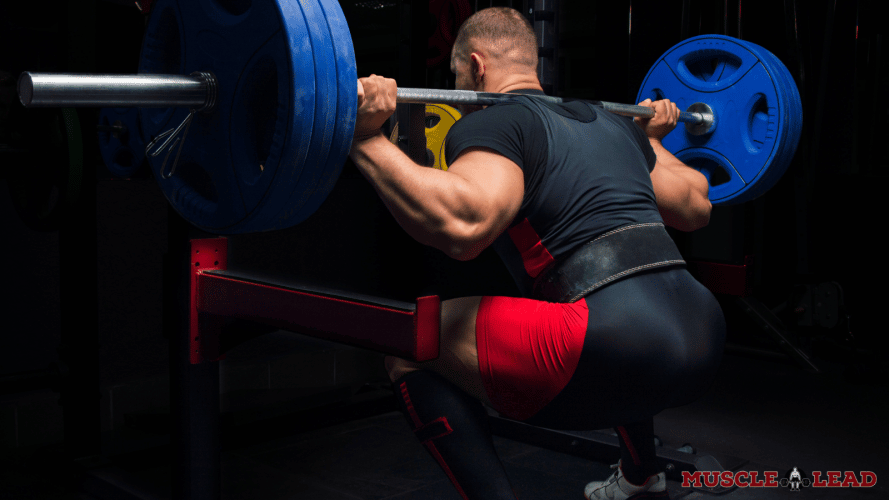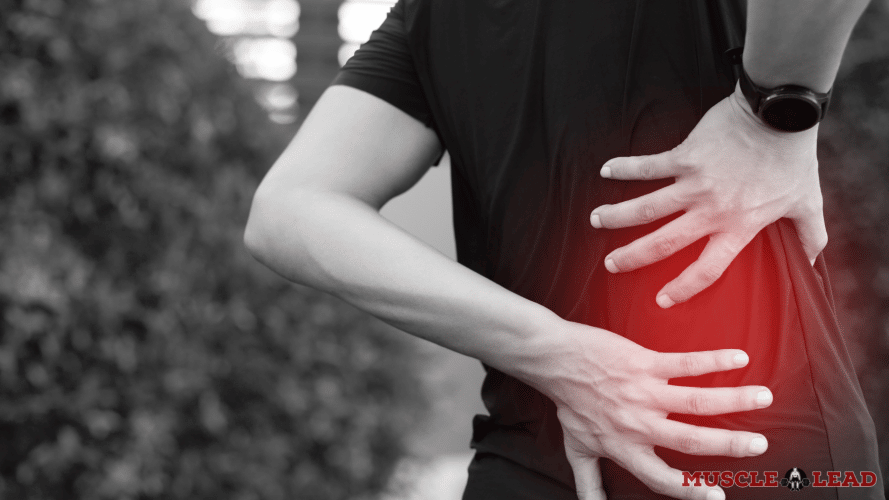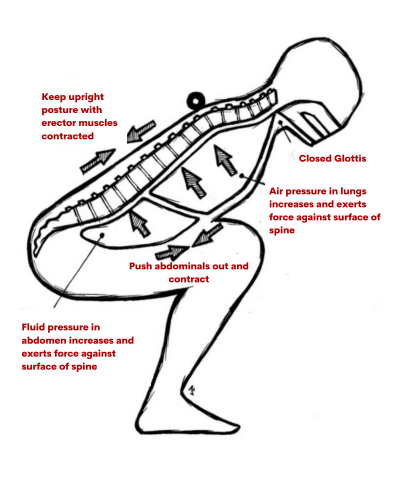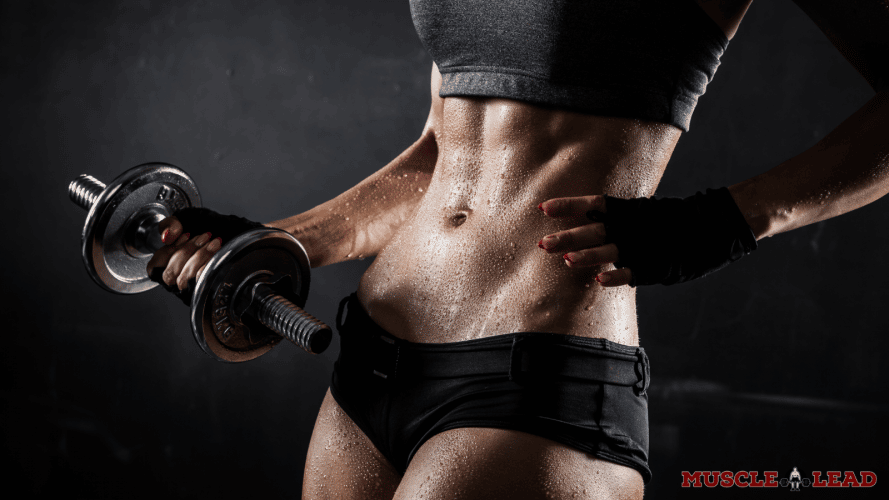Key Points
- A weight lifting belt’s purpose is not to treat lower back pain.
- The primary role of your lifting belt is for your core not your lower back.
- In general, any lower back injury is a cause of repetitive movements performed poorly.
“There are two types of people in the world: those with back pain and those without it.”
Charles Barkley
NBA Hall of Famer Charles Barkley famously said this after he retired due to his lower back injury.
I can attest to this quote after seeing my friend go through bouts of lower back pain early in his lifting career. He did everything wrong when it comes to technique and form.
The result was poor mechanics and a nagging lower back injury. It was hard for him to walk, sleep, sit, and do pretty much any other activity you can think of.
He would walk it off and take a few days off feeling better. After he learned the proper form, his back pain healed, and he got stronger.
Though he got better, he picked up another bad habit I notice constantly in gyms. He would wear a lifting belt anytime he would do any strength movement.
He confirmed that he didn’t get any lower back pain after he began using a lifting belt to support his lower back. I had some confusion because a lifting belt’s purpose is not to treat lower back pain.
So, I did my research on the topic and what I found will surprise many of you. Let’s go over the common idea do weight lifting belts help lower back pain.
I will begin with the purpose of a lifting belt and how you should be lifting heavy weights correctly.
The Role of the Weight Lifting Belt
Before starting with ‘do weight lifting belts help lower back pain?’, you need to know what the belt does. You learn the basics of lifting and progress your weights slowly. Now you think you’re ready for a lifting belt.
What does this simple yet effective piece of equipment do?
At the most basic level, a weight lifting belt increases your intra-abdominal pressure. This little jump in IAP helps you brace more and lift more.
I don’t recommend starting to use a lifting belt until you hit certain milestones. But once you’re ready it can help you smash your PRs.

The weight lifting belt should feel like a barrier pushing on your core when you brace. One of the cues I think of while wearing a lifting belt is to breathe into the belt. Again, you’re using your abdominal muscles to expand your torso.
The primary role of your lifting belt is for your core not your lower back. The weight lifting belt provides you with more trunk stability during heavy lifts.
An Ounce of Prevention
As a newbie lifter, nothing is more important than form.
Think of it as an investment into preventing an injury. The more time you research about lifting mechanics means less time nursing an injury. As the saying goes, an ounce of prevention is worth a pound of cure.
Always start with lower weights and ask other experienced lifters for help. You can take a video of yourself and post it on Reddit like r/weight lifting to get feedback. If you go too hard with the weights and don’t have proper form, you could injure yourself.

My friend got lucky with his injury. Unfortunately, many people will not recover from a lower back injury.
Filling up the Tank – Brace the Right Way
Whenever you do a strength movement, you should be following a sequence of steps to brace.
In a movement like squats, you get under that loaded barbell and take a big breath in. You’re expanding your abs and torso not your chest here.
Next, you hold that breath in and brace your abs as if you’re about to get a punch in the stomach. In some strength circles, this action fills up your tank.
These steps increase the intra-abdominal pressure inside your body cavity. You’re creating a tremendously stable environment for your body and internal organs.
This prevents the heavy barbell from crushing you. Think of a full soda can. Try stepping on the can directly on the top. You can’t crush it. There is too much stability in the can’s internal pressure preventing it from crushing.
The same goes for your torso. Your breath and internal pressure create a full soda can.
What happens if you don’t brace properly? Well, try the above experiment with an empty soda can. You just hulk smashed a pop can.
For your squat, without proper bracing, you compensate with other muscles. Most often, people will round their back excessively. This causes direct force and pressure on your spine.
Lifting and Lower Back Pain
Lifting weights is difficult with lower back pain. Heavy lifting is completely out of the question.
Speaking from experience, lower back pain is a finicky condition. Stretching may work for one person but debilitate another.
Even after you go see a physical therapist, you can lack the motivation to fix the cause of your back pain. Depression sets in and your willpower to go to the gym is gone.
Don’t let yourself get into this rut. It’s so hard. But don’t let back pain win. Instead, aim to understand your back pain better.
The first step is learning the triggers of your back pain during lifting. Take videos during your lifting technique. You could be overarching your back during deadlifts. Maybe your back is rounding during lifts.

Rounding of the back is common and can cause a lot of force on your lower spine. This is the ‘butt wink’. Although it may not be an immediate sign of poor form, you should further investigate it.
Another test is checking your posture. If your shoulders round while standing your back muscles may need some strengthening.
In general, any lower back injury is a cause of repetitive movements performed poorly.
Upper Back Pain While Deadlifting? Reasons and How to Fix
Does a Weight Lifting Belt Help with Back Pain?
In short, weight lifting belts help stabilize your core and increase IAP during a lift. But if you have lower back pain, a belt will only mask your pain. A lifting belt should only be used to increase your lifts and not as a band aid.
If you have lower back pain, a lifting belt will not heal you. It won’t duct tape your problem away.
In the first phase of lower back pain, you need to limit lifts or lower your weights to help with healing. A lifting belt does not help with bad back healing. You won’t magically be able to lift again with a lifting belt.
A lifting belt is another layer to brace against. It works your core muscles not your back. The restraint from a lifting belt lets you generate more pressure.
This increase in pressure and core bracing helps you develop strength all over. A rigid core keeps your lower back safe. But, a stable core does not fix lower back pain.

For instance, if the cause of your lower back pain is due to the butt wink it’s likely a flexibility issue. Strapping on a lifting belt will not help your mobility. You need to perform active and static stretching drills to prevent rounding.
Breathing and bracing only help with core stability. No lifting belt in the world can help with mobility.
Final Thoughts
Lifting safely and purposely should always be the top priority for all lifters.
Always aim for the best technique possible. Sometimes, a lifting belt can help with technique. With a weight lifting belt, you can generate higher intra-abdominal pressure. In turn, you can lift more with better form. However, using a lifting belt for anything else is asking for injury.
Lower back pain is complex. The condition requires a multi-disciplinary approach to rehabilitation. Using a lifting belt to help with lower back pain is barely a band-aid solution. You may make your condition worse by not focusing on the underlying cause of your back pain.
Fix yourself first. You can then work your way up to heavy weights again. Eventually, using your lifting belt will help you break through plateaus without pain.
More about Lifting Belts:





